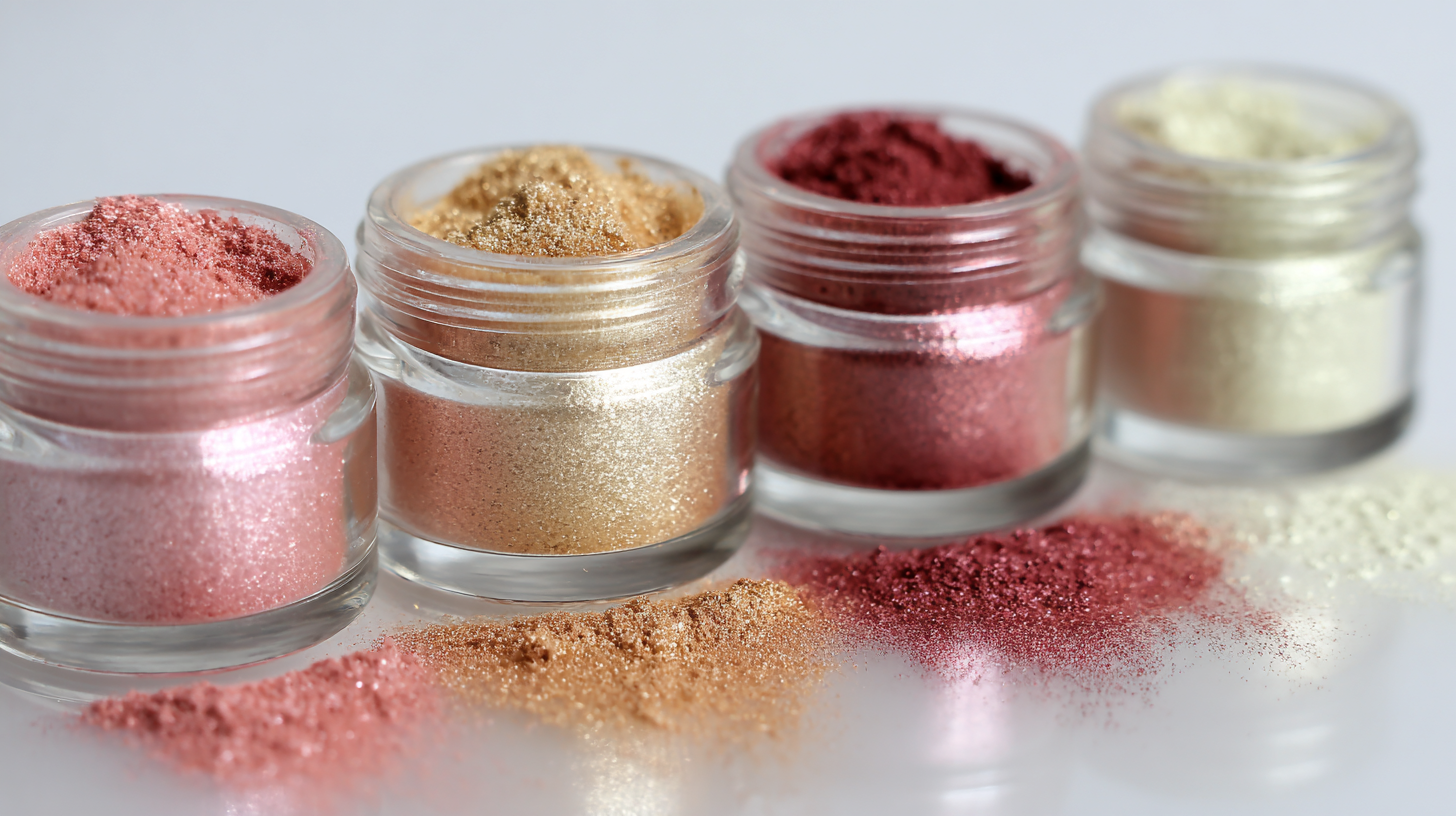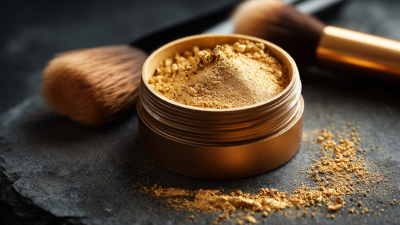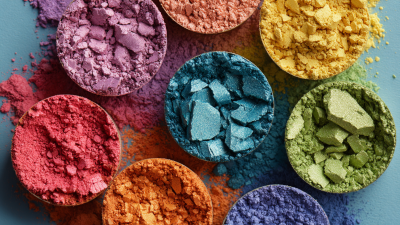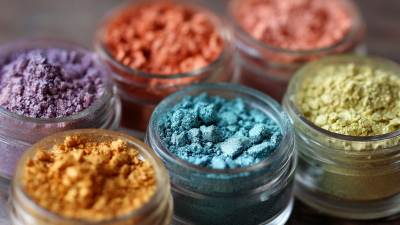When it comes to crafting stunning epoxy projects, the use of Mica Powder for Epoxy stands out as a favorite among artists and DIY enthusiasts alike. This versatile pigment not only enhances the visual appeal of resin creations with its vibrant colors and shimmering effects, but it also offers a level of customization that allows you to express your unique artistic vision. However, achieving the perfect result requires some knowledge and technique. In this guide, we will explore seven essential tips to help you effectively incorporate Mica Powder for Epoxy into your projects. From selecting the right type of powder to mastering the mixing process, these insights will empower you to elevate your epoxy art to new levels of beauty and professionalism. Whether you're a beginner or an experienced crafter, these tips will help you unlock the full potential of Mica Powder for your resin creations.

Choosing the right mica powder for your epoxy projects can elevate the aesthetic appeal of your creations while ensuring durability. When selecting mica powder, consider the intended look and feel you want to achieve. Mica powders come in a variety of colors and finishes, allowing you to choose from subtle iridescence to bold metallics. It's essential to test a small amount of the powder in your epoxy mixture to see how it reacts and appears once cured. This preliminary step can help you avoid mistakes and achieve the desired effect.
Additionally, ensure compatibility between the mica powder and the epoxy resin you’re using. Some powders may not mix well with specific formulations, leading to issues such as separation or inconsistency in texture. Checking the manufacturer’s recommendations can be a useful guideline. The right mica powder not only enhances the overall visual appeal of your epoxy projects but also complements their functionality as seen in recent trends for kitchen and bathroom countertops. By carefully selecting your mica powder, you can create stunning surfaces that are both beautiful and functional.
| Tip | Description | Recommended Use |
|---|---|---|
| Choose High-Quality Mica Powder | Select mica powder that is non-toxic and derived from natural minerals. | Use for safe, high-quality epoxy finishes. |
| Consider Color Compatibility | Choose colors that complement or contrast well with your resin base. | Ideal for creating eye-catching designs. |
| Test Small Batches First | Mix small amounts of mica powder with resin to see how it reacts before full application. | Useful for experimenting with effects. |
| Watch for Settling | Stir mica powder thoroughly to prevent it from settling at the bottom of the resin. | Important for consistent color and effect. |
| Mixing Ratios Matter | Adjust the amount of mica powder to achieve desired opacity and shimmer. | Critical for achieving specific looks. |
| Seal Your Work | Consider a topcoat to protect the appearance of your epoxy project. | Enhances durability and shine. |
| Safety First | Wear a mask and gloves when handling powders to avoid inhalation or skin contact. | Essential for safe crafting. |
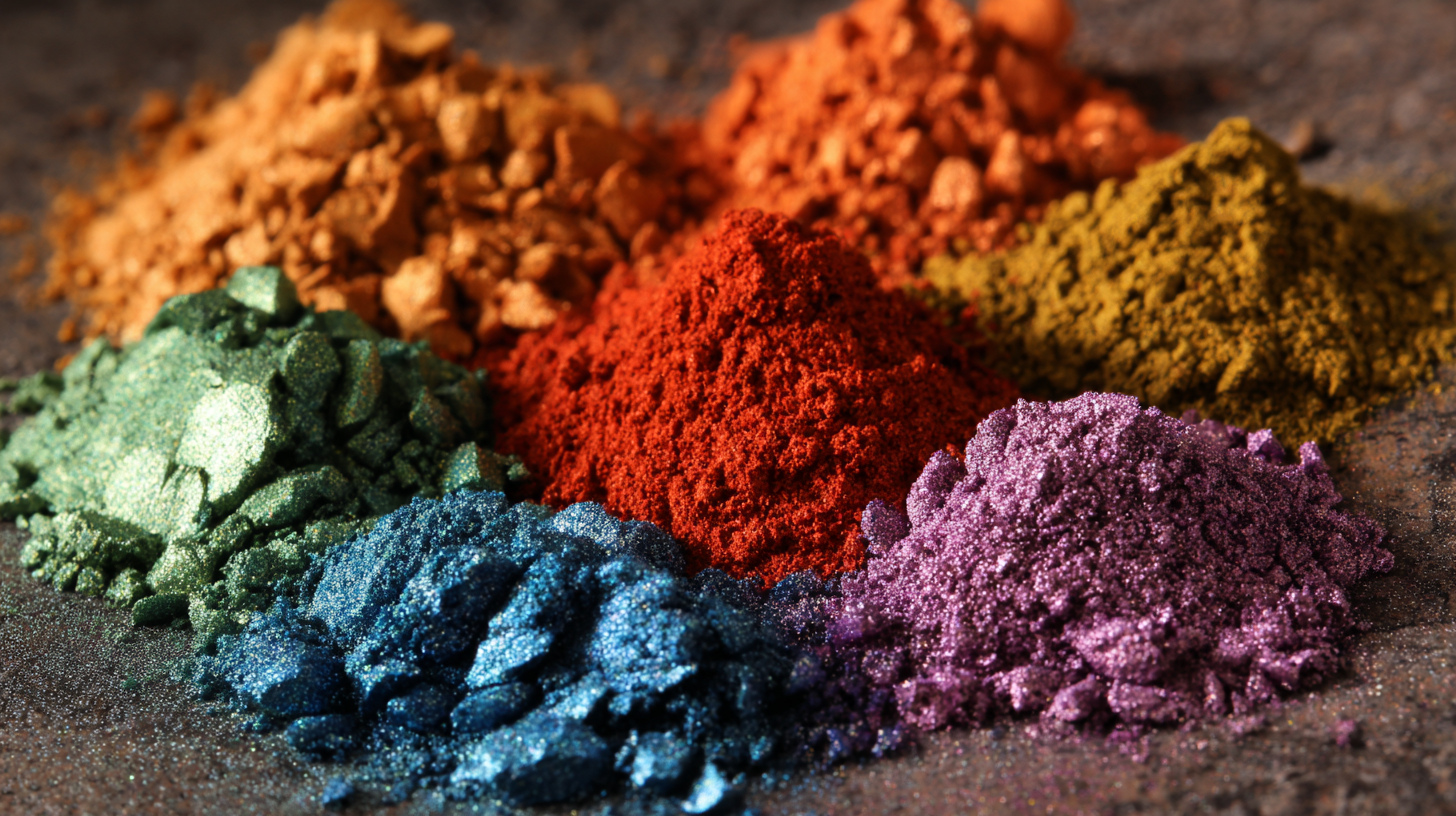 Mica powder is a versatile tool in epoxy projects, enabling artists to create stunning effects through color mixing. Understanding the properties of mica is crucial, as this natural mineral can produce a range of colors with unique shimmer and depth, enhancing the aesthetic appeal of any project. According to a recent industry report by the "International Journal of Coating Technology", the use of mica powder in resin applications has increased by over 40% in the past five years, demonstrating its growing popularity among artisans and DIY enthusiasts alike.
Mica powder is a versatile tool in epoxy projects, enabling artists to create stunning effects through color mixing. Understanding the properties of mica is crucial, as this natural mineral can produce a range of colors with unique shimmer and depth, enhancing the aesthetic appeal of any project. According to a recent industry report by the "International Journal of Coating Technology", the use of mica powder in resin applications has increased by over 40% in the past five years, demonstrating its growing popularity among artisans and DIY enthusiasts alike.
When mixing mica powder, it’s essential to keep in mind the ratio for achieving the desired opacity and brilliance. Start with a small amount, usually about 1-2 teaspoons of mica powder per 8 ounces of epoxy resin, and adjust according to preference. This method provides a base to experiment with color layers and effects. Additionally, layering different colors of mica can create beautiful gradients, allowing for an artist’s unique touch.
Experimenting with mica powder can lead to unexpected and delightful results. For instance, mixing metallic and matte mica powders can provide contrast and enhance the overall design. Always remember to thoroughly mix the mica with the resin to avoid clumping, which can disrupt the fluidity of your project. With these tips in hand, you can elevate your epoxy creations, turning them into vibrant works of art.
Incorporating mica powder into epoxy resin projects can elevate your creations by adding depth and vibrancy. To properly integrate mica powder, start by selecting the right type for your project. Mica powders come in various particle sizes and colors, which can influence the transparency and final appearance of your resin. According to industry reports, mica powder not only enhances aesthetics but can also increase the durability and scratch resistance of the finished product, making it a favorite among both DIY enthusiasts and professional artisans.
When mixing mica powder with epoxy, it's essential to achieve a thorough blend to prevent clumps. Use a heat gun to help disperse the mica evenly, ensuring a uniform finish. Additionally, consider the ratio of mica powder to resin; a common practice is to use 1-2 teaspoons of mica powder per ounce of resin for optimal color saturation without compromising the resin's structural integrity. Experimenting with different amounts can lead to unique effects, allowing for creativity in your projects.
Lastly, ensure you have the right supplies before starting your project. Quality resin molds, epoxy, heat guns, and safety equipment are crucial for the success of your work. Various suppliers offer reliable materials that will help bring your artistic visions to life. By following these tips, you can successfully incorporate mica powder into your epoxy designs, creating stunning pieces that stand out.
Incorporating mica powder into your epoxy projects can elevate the aesthetics and durability of your creations. To achieve the best results when mixing and curing epoxy with mica powder, it's essential to adhere to best practices. According to a report by the American Composites Manufacturers Association, nearly 70% of epoxy users highlighted color consistency as a critical factor in their projects. This underscores the importance of thorough mixing.
When adding mica powder, start with a small amount—typical recommendations suggest about 5-10% of the total weight of the epoxy. This ensures brilliant colors without compromising the epoxy's curing process. Mix it in slowly to allow for even distribution, which will help avoid clumps and ensure a smooth finish. Remember, the finer the mica powder, the better the dispersion.
Curing is another critical phase that requires careful attention. Mica powder can slightly alter the viscosity of the epoxy, which may affect cure times. To combat this, maintain optimal working temperatures, ideally between 70-80°F (21-27°C). Industry studies have shown that controlling the temperature during curing can enhance the final product’s strength by up to 30%. Keeping these tips in mind will lead to successful and stunning epoxy projects.
When it comes to enhancing your epoxy projects, incorporating mica powder can bring a stunning depth and vibrancy to your designs. One creative technique for layering with mica is to experiment with transparent layers of epoxy, which allows the vivid colors of the mica to shine through while adding complexity to your piece. By pouring a clear layer of epoxy first and then sprinkling mica powder strategically, you can create an ethereal effect that mimics natural phenomena such as water reflections or the shimmering surface of a calm lake.
Another effective method is to use the layering technique with varying hues of mica to influence the overall aesthetic. For instance, by alternating between light and dark shades, you can produce a beautiful ombré effect that draws the eye and adds visual interest. Additionally, consider integrating different textural elements—like including small shells or stones within your epoxy layers—complemented by the shimmering mica powder, effectively uniting form and function in your art. This approach not only elevates the visual appeal but also aligns with contemporary trends seen in artistic displays, such as Guillaume Grando's recent watery poster design for the Montreux Jazz Festival.
